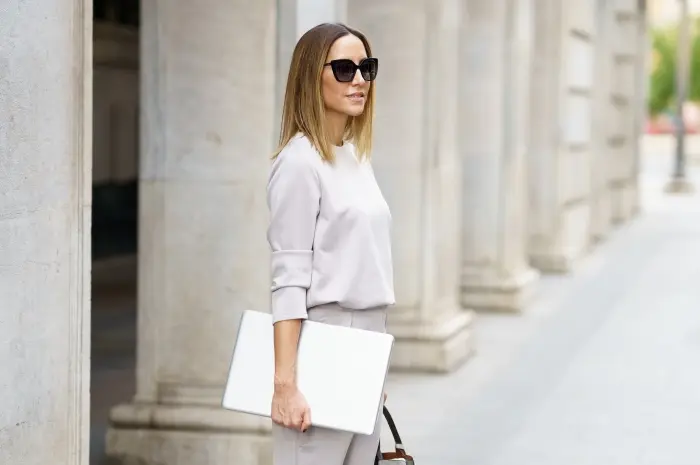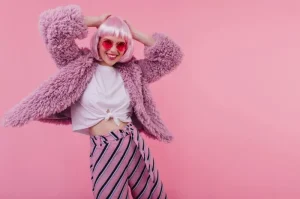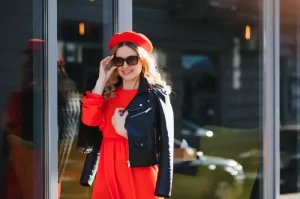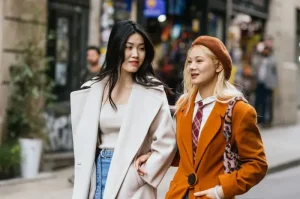Discover how minimalism in fashion has revolutionized modern style, emphasizing simplicity, quality, and timeless appeal in an era of fast fashion and excess.
Minimalism in fashion is more than just an aesthetic; it is a philosophy that values simplicity, functionality, and quality over excess. Unlike fleeting trends that come and go, minimalist fashion embraces timeless designs that withstand the test of time.
The power of minimalism lies in its ability to create effortless, sophisticated looks with fewer but better-chosen pieces.
As the fashion industry shifts toward sustainability and intentional consumption, minimalism has gained a strong following among designers, influencers, and consumers alike.
This article explores the key aspects of minimalism in fashion, highlighting its impact on modern trends and its lasting influence on personal style.
1. The Evolution of Minimalism in Fashion
Minimalism in fashion has deep roots, tracing back to the 20th century when designers like Coco Chanel, Yves Saint Laurent, and Jil Sander championed clean lines and understated elegance.
The 1990s saw a major resurgence of minimalism with designers such as Calvin Klein and Helmut Lang, who embraced monochrome palettes and simple silhouettes.
In recent years, the minimalist movement has evolved beyond just aesthetics—it now represents a conscious lifestyle choice that rejects fast fashion in favor of timeless, high-quality pieces.
As more people seek to declutter their wardrobes and focus on essentials, minimalism continues to define the modern fashion landscape.
2. The Philosophy of ‘Less is More’ in Wardrobe Choices
At the heart of minimalist fashion is the principle that “less is more.” Rather than chasing trends and accumulating excessive clothing, minimalists invest in versatile, well-crafted garments that can be worn in multiple ways.
Capsule wardrobes, consisting of a curated selection of essentials like tailored trousers, neutral-toned tops, and structured outerwear, have become a key feature of this approach.
This philosophy not only simplifies daily outfit choices but also ensures that each piece serves a purpose, reducing fashion waste and encouraging mindful consumption.
3. The Impact of Minimalism on Sustainable Fashion
Minimalism and sustainability go hand in hand, as both prioritize reducing excess and making thoughtful purchases. The fashion industry is one of the largest contributors to environmental waste, with fast fashion fueling overproduction and excessive landfill waste.
Minimalist fashion promotes a shift toward conscious shopping, where consumers focus on longevity rather than short-lived trends.
Investing in durable fabrics, ethical brands, and timeless designs reduces the need for constant replacements, making minimalism a key player in the movement toward a more sustainable fashion industry.
4. Neutral Color Palettes and Their Timeless Appeal
Minimalist fashion often embraces a neutral color palette, featuring shades of white, black, beige, gray, and muted earth tones. These colors create a sense of cohesion and versatility, allowing pieces to be effortlessly mixed and matched.
Unlike bold patterns or seasonal hues that can quickly feel outdated, neutral tones remain timeless and sophisticated, making them ideal for long-term wardrobe investment.
The simplicity of these colors also enhances the focus on silhouette and fabric quality, reinforcing the refined elegance of minimalist style.
5. Clean Lines and Simple Silhouettes as a Signature Look
One of the defining features of minimalist fashion is its emphasis on clean lines and uncluttered silhouettes. Structured blazers, tailored trousers, and sleek midi dresses are preferred over excessive ruffles, embellishments, or exaggerated forms.
This approach to design creates a polished, effortless aesthetic that works for both casual and formal occasions.
Designers like The Row, COS, and Acne Studios have mastered the art of minimalist tailoring, proving that simplicity can be just as powerful—if not more—than elaborate details.
6. Quality Over Quantity: Investing in Timeless Pieces
Minimalist fashion shifts the focus from quantity to quality, encouraging individuals to invest in well-made, long-lasting garments. Instead of buying multiple inexpensive items that wear out quickly, minimalists prioritize high-quality fabrics such as wool, linen, silk, and organic cotton.
Craftsmanship is also a key factor, with an emphasis on precise tailoring and durable stitching. This investment mindset ensures that pieces not only last longer but also maintain their aesthetic value over time, ultimately saving money and reducing waste in the long run.
7. The Role of Accessories in Minimalist Fashion
Accessories in minimalist fashion serve as subtle yet impactful statements, complementing rather than overpowering an outfit. Simple gold or silver jewelry, structured leather handbags, and classic watches are staple pieces that add a refined touch without excess.
Unlike maximalist fashion, where accessories can dominate a look, minimalist accessorizing is about enhancing the outfit with understated elegance.
The key is to choose timeless, versatile accessories that integrate seamlessly with different outfits, maintaining the core principle of simplicity.
8. The Influence of Minimalism on High Fashion and Runways
Luxury fashion houses and designers have embraced minimalism, incorporating its clean aesthetics into high-fashion collections.
Brands like Celine, Prada, and Bottega Veneta have repeatedly showcased minimalist-inspired collections that focus on precision tailoring, subtle textures, and monochromatic palettes.
The runway influence of minimalism extends beyond clothing to beauty and styling, with models sporting natural makeup and sleek, effortless hairstyles.
This high-fashion interpretation of minimalism reinforces its status as a powerful and enduring trend in the industry.
9. Minimalist Fashion in Street Style and Everyday Wear
While minimalism is often associated with high fashion, it has also found a strong presence in everyday street style.
Influencers and fashion enthusiasts have redefined casual dressing with minimalist outfits featuring oversized blazers, straight-leg jeans, white sneakers, and structured tote bags.
The adaptability of minimalism allows it to be incorporated into various styles, from Scandinavian-inspired neutral outfits to Japanese minimal streetwear.
This accessibility makes minimalist fashion an appealing choice for individuals who seek effortless elegance in their daily attire.
10. The Psychological Benefits of a Minimalist Wardrobe
Beyond aesthetics, minimalist fashion offers psychological benefits, contributing to a more organized and stress-free lifestyle. Reducing the number of clothing choices each day eliminates decision fatigue, allowing individuals to focus on other priorities.
A clutter-free wardrobe also promotes a sense of calm, as it removes the overwhelming feeling of excess and disorganization.
Minimalist dressing encourages confidence by emphasizing well-fitting, thoughtfully chosen pieces that align with personal style, ultimately leading to a more intentional and satisfying approach to fashion.
Minimalism in fashion is not just about wearing fewer colors or simpler silhouettes—it is a mindset that embraces intentionality, quality, and longevity.
As the fashion industry moves towards more sustainable and thoughtful practices, minimalism continues to gain momentum, influencing designers, brands, and everyday consumers.
Whether through neutral palettes, structured tailoring, or mindful shopping habits, minimalism offers a timeless and sophisticated approach to style.
By embracing this philosophy, individuals can create a wardrobe that is both elegant and practical, proving that sometimes, less truly is more.





